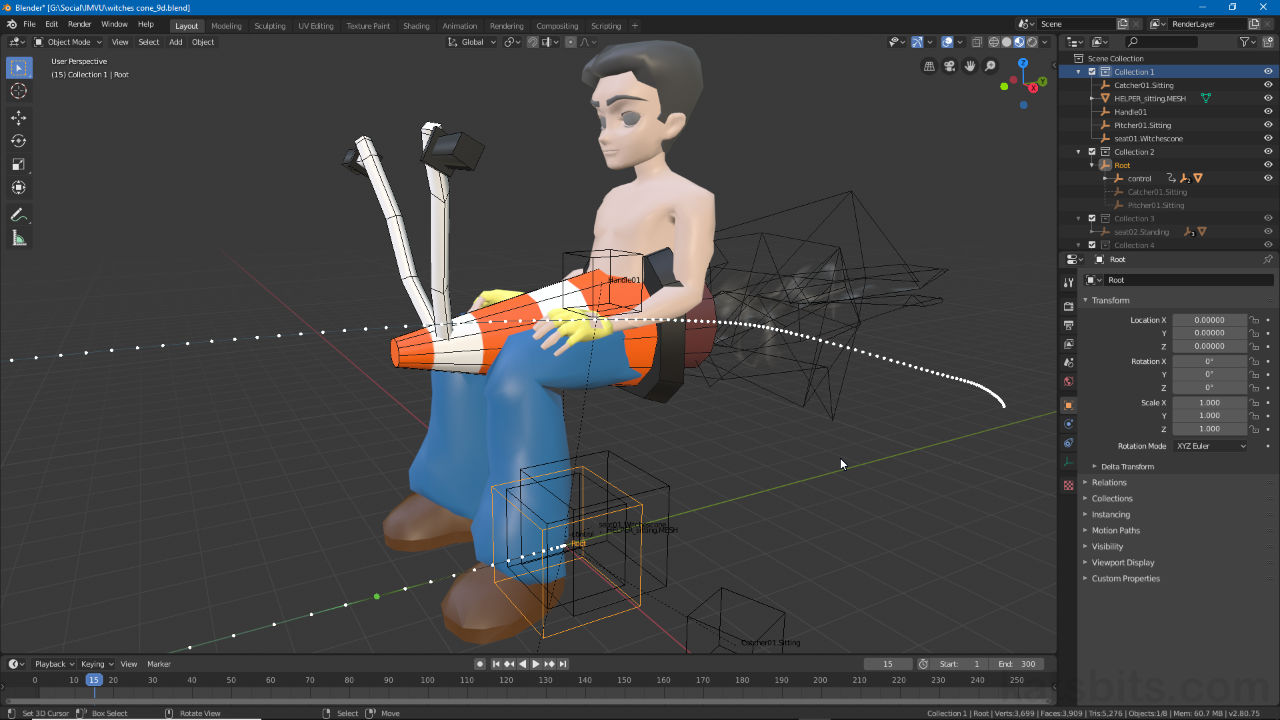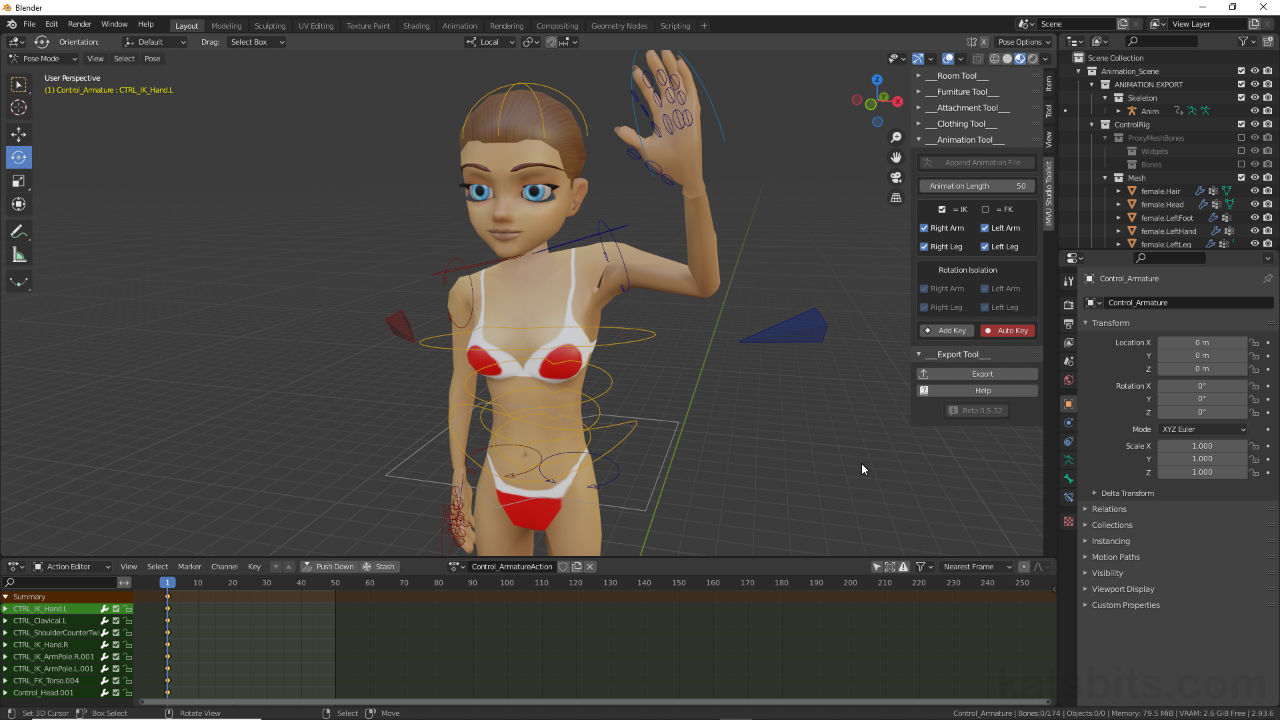Blender & IMVU Creating
Table of Contents
For IMVU creators newer versions of Blender present a relatively significant change to the product development process that might mean an upgrade not being as meaningful as thought, especially over the current established version, Blender 2.79. The short answer to asking whether Blender 2.8 or above can be used to make content for IMVU is “yes“. The slightly less short answer is “yes, but it kinda depends“, largely on the additional steps needed to make projects and files functional due to the changes that have occurred.
Action: IMVU has released a dedicated Toolkit for Blender. For more information on this and how to use to Toolkit see “IMVU Studio Toolkit – Installing” and here “IMVU Studio Toolkit For Blender“.
Action: Learn to Create with newer versions of Blender here.
Design note: learn more about the changes introduced with newer versions of Blender here.

An IMVU furniture properly textured in Blender 2.80.
Starter Files
For newer versions of Blender the IMVU Starter Files have been updated to be properly compatible with the application, everything needed to create functional accessories, furniture, rooms, clothing and poses is included in each ZIP.
Download: for more information on the Starter Files for Blender and what’s included see here.
- Avatar Starter File (c.8 MB).
- Room Starter File (c.3 MB).
- Furniture Starter File (c.4 MB).
Tutorials
Even for those familiar with using Blender 2.79 to make custom content for IMVU, Blender 2.8+ and above presents a few changes that may catch the unsuspecting off guard. For more see here to learn how to use Blender to make accessories, poses, furniture, rooms, or specific types of items – hats, rings, skirts, socks etc. Find out how here.
Missing Images
When opening old *.blend files into Blender 2.8+ and newer versions the most immediate issue are missing images (notwithstanding being in the correct ‘display mode‘). This is due entirely to Blender 2.8+ no longer supporting ‘Multitexture‘ and ‘Blender Render‘ (Blender Internal), the default legacy systems used to display objects on screen in previous versions of the application (Blender 2.79 and below).

Accessing Material Properties in Blender 2.8+ reveals a lot of ‘missing’ properties previously available in Blender 2.79 and below, now considered obsolete, they are no longer supported.
The fix for this requires the conversion of old materials to the new node-based system, using the Node Editor (Shading Workspace), so that rather than having separate Material, Texture and Image properties comprising an assigned material, the settings and options normally selected during creation of old, are now ‘nodes‘ or distinct blocks linked together into a larger group forming a Material ‘tree’, three for standard materials, five for basic transparency (image based alpha).
Design note: the use of nodes only applies to the display of materials/images in Blender, for IMVU, so long as the normal naming conventions are followed (material names being numerically appended [n] where ‘n’ represents an incremental number), meshes will import, and be assembled with, materials in Create Mode.


The most basic node-based Material in Blender 2.8 requires three nodes that correspond to materials of old (image, top), whereas materials with transparency, at least to display in Blender 2.80, need two extra nodes to accommodate transparency (alpha/image based).
Cal3D obsolete
It may possible to utilise Cal3D for IMVU content exported from Blender 2.8+ and newer but it’s unlikely to happen with the availability of FBX and the age of Cal3D essentially ensuring its general obsolescence (there is no Cal3D exporter for newer versions of Blender). To export FBX files from Blender for use in IMVU follow the FBX export/import guidelines here.
Design note: export will differ depending on the product type, see here for general details.

Cal3D is no longer supported as an export option for Blender which instead favours FBX, exporting to which is the same as previously established – select the objects to be exported and choose FBX (.fbx) from File » Export.
Avatar Scale
Avatar and object scale has not changed with Blender 2.8+ and newer so the available Starter Files remain the default reference point for IMVU content. If meshes need to be loaded or transferred to Blender 2.8, Append can be used to bring those Objects into the newer version – briefly, to do that, with a Starter File open click File » Append then in the Browser click the Objects folder from the file opened and select the items to load.
Design note: assuming previous projects were created in Blender, anything subsequently brought in to Blender will be correctly sized and scaled relative to IMVU. For more information about scale as it relates to IMVU see “How tall are IMVU Avatars?” or “Append for IMVU : Object Scale/Size” – when loading older *.blend files disable Load UI lower-left of the File Browser to ensure old interface settings are not used (reset Clip Start and End once the project has loaded – see below).
Important: If objects are at a different scale to the Starter File avatars (IMVU uses a scaling that’s approximately 100x larger than Blenders), before doing anything make sure the 3D Cursor is at 0,0,0 grid centre and check the Pivot Point is set to 3D Cursor – activating Scale (S) with this done will resize selections relative to the cursor rather than individual object Origins (especially important for files appended or imported into Blender from other applications). With this done, a few options are available because the above establishes how big or small the files being brought into Blender are, making it possible to then compensate at export from, or import to, one or the other (another 3D application and/or Blender).
DO NOT ADJUST THE AVATARS INCLUDED IN THE STARTER FILES, ADJUST CUSTOM CONTENT IN RELATION TO THEM ONLY – THIS IS CRITICAL TO ENSURE CORRECT PRODUCT SIZE/SCALE.
![]()
Avatar and object size and scale hasn’t changed for Blender 2.8+ so using the available Starter Files, everything remains properly scaled as it should relative to IMVU (press N to display View properties in the Sidebar).


